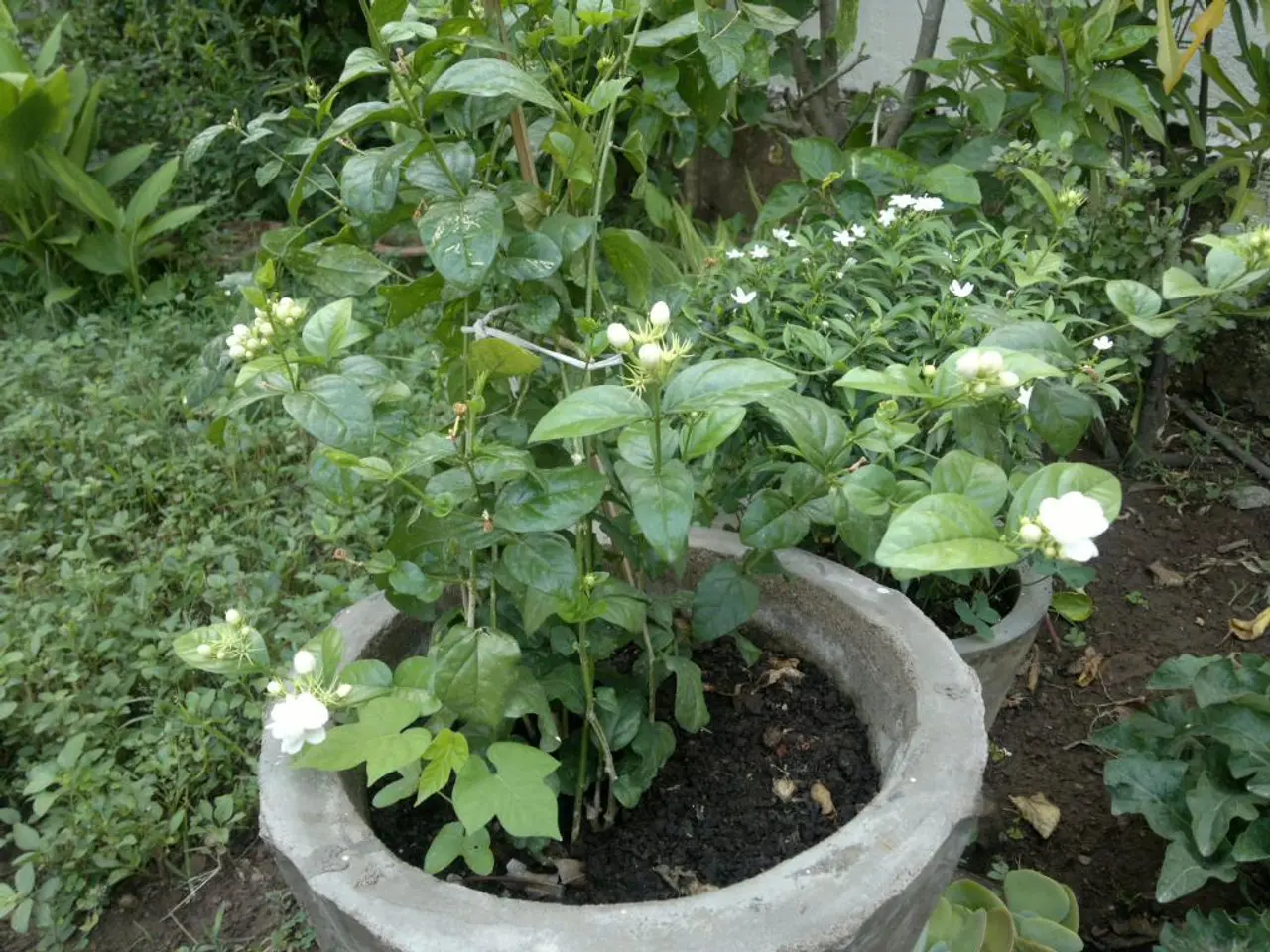Heating Refuge for Winter Wildlife Utilizing Cornus alba and Cotoneaster
Creating a Vibrant and Wildlife-Friendly Container Display
Winter is coming, and it's time to prepare your container garden for the colder months. By combining a selection of plants that offer colourful berries, interesting shapes, and wildlife benefits, you can create a container display that shines even in the snow.
Choosing the Right Plants
For a colourful and captivating container display, consider the following plant varieties:
- Cotoneasters provide attractive red berries that are favoured by birds in winter. They offer evergreen or semi-evergreen foliage that adds structure and colour through cold months.
- Cornus controversa 'Variegata' (Wedding Cake Tree) is a deciduous medium-sized shrub with blue-black berries eaten by birds. Its distinctive layered branching structure adds excellent architectural interest in winter.
- Holly (Ilex spp.) is well-known for its bright red berries and dense foliage, providing food and shelter for birds like thrushes and robins throughout winter.
- Viburnum shrubs produce flowers in spring for pollinators and berries in fall and winter that feed robins, cardinals, and thrashers.
- Winterberry (Ilex verticillata) is a deciduous holly with outstanding red berries persisting into snowy months, essential for sustaining birds like cedar waxwings.
- Echinacea (Coneflower) offers colourful summer blooms and seed heads that provide food in fall and winter. The upright seed heads also add texture and vertical interest when other flowers fade.
- Black-eyed Susan (Rudbeckia) brings late summer/fall colour and seed heads that birds feed on into winter, while its stems provide structure.
- Trumpet Honeysuckle (Campsis radicans) attracts hummingbirds with tubular flowers and later produces berries for birds. It can be grown on an arbor or trellis near containers.
Caring for Your Container Display
To ensure the success of your container display, follow these care tips:
- Use well-drained, fertile potting soil. Cornus controversa needs consistent watering and annual mulching when grown in containers to maintain moisture and nutrients.
- Minimal pruning is required for Cornus controversa—only remove dead or crossing branches in late winter to preserve its natural shape. Cotoneasters may need light pruning to maintain shape.
- Choose spots with sufficient sun or partial shade depending on the plant’s preference. Cornus prefers consistent sunlight but tolerates some shade; viburnums adapt well to various settings.
- Protect plants from extreme winds to prevent branch damage, especially Cornus with its horizontal branching. Since birds are attracted by berries in cold months, retain seed heads on perennials like Echinacea and Rudbeckia after flowering.
- Combine evergreen foliage (cotoneaster, holly) with deciduous shrubs (winterberry, viburnum) and flowering perennials for year-round interest and continuous bird support.
This combination ensures a container planting with colourful flowers and berries, as well as architectural structure and consistent wildlife attraction through autumn and winter. It supports birds by providing food (berries, seeds) and shelter (dense or layered foliage), maintaining aesthetic appeal when many gardens are fading.
Important Notes
- The RHS H7 hardiness rating and USDA 5a-7b zone apply to 'Cotoneaster horizontalis'.
- 'Cotoneaster horizontalis' is a low-growing, spreading deciduous shrub with distinctive, flat, herringbone-patterned sprays of leaves, glossy dark green leaves that turn orange and red in autumn, pinkish-white flowers in late spring, and red berries. It reaches a size of 50cm x 1.8m.
- It is an offence to plant or cause 'Cotoneaster horizontalis' to grow in the wild in England and Wales.
- The RHS H7 hardiness rating and USDA 3a-7b zone apply to 'Cornus alba' 'Elegantissima'.
- 'Cotoneaster x suecicus' 'Coral Beauty' is an evergreen shrub with small, glossy, dark-green leaves, clusters of small, white summer flowers, and bright-orange berries. It forms a dense mound of 1m x 2m.
- The AGM status applies to 'Cotoneaster x suecicus' 'Coral Beauty'.
- The RHS H6 hardiness rating and USDA 5a-8b zone apply to 'Cotoneaster x suecicus' 'Coral Beauty'.
- Incorporating plants like Cotoneaster horizontalis, with its vibrant red berries and glossy leaves that turn orange and red in autumn, into a home-and-garden container display creates a lifestyle that is both aesthetically pleasing and wildlife-friendly.
- By choosing plants with attractively colored berries, such as Viburnum shrubs and Winterberry, and structured foliage, like Holly and Cotoneaster, you can maintain an appealing container garden throughout the winter months.
- Gardening enthusiasts seeking to create a container display featuring flowers, berries, and year-round wildlife support would benefit from considering the wide array of plants available, such as Trumpet Honeysuckle and Black-eyed Susan, to complement their home-and-garden ecosystem.




